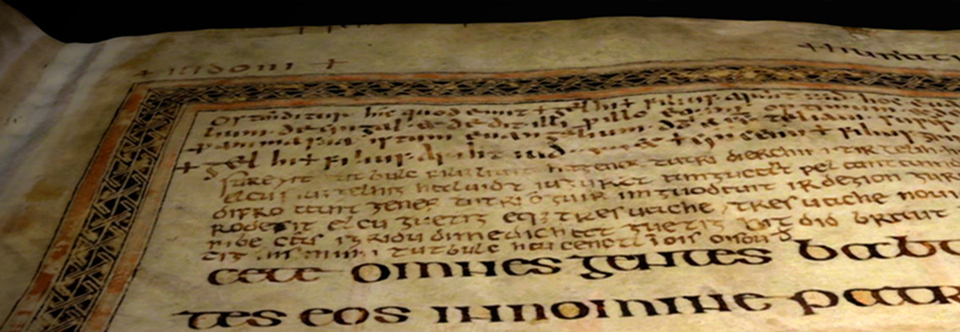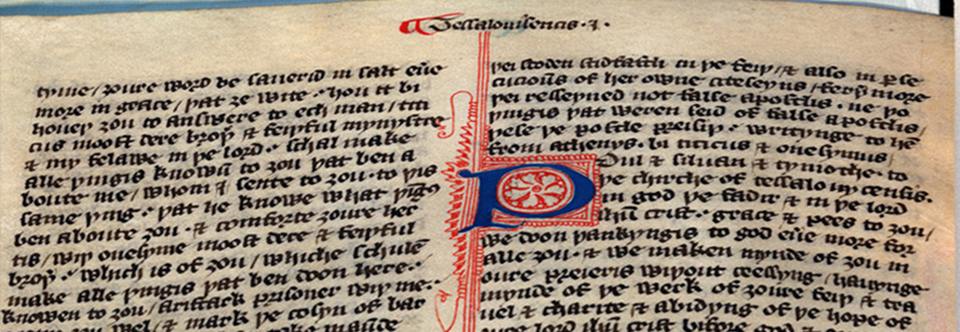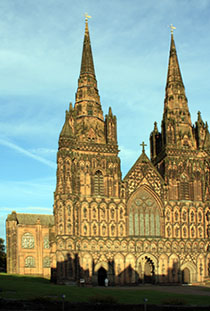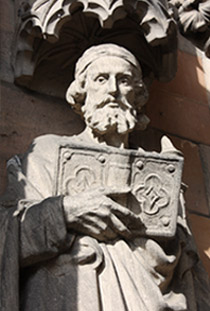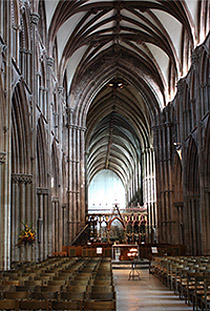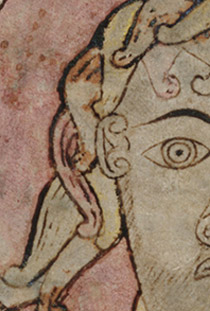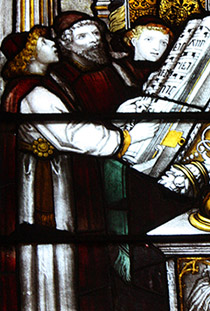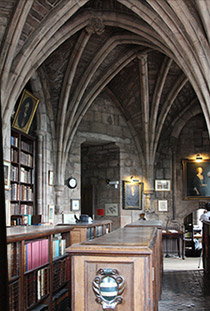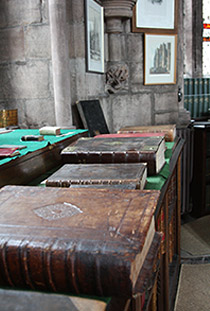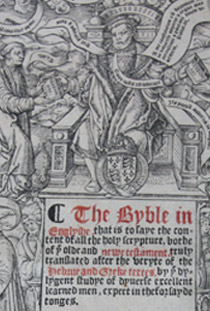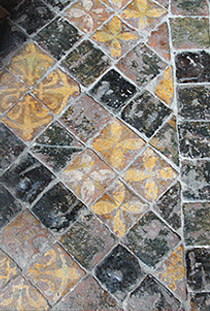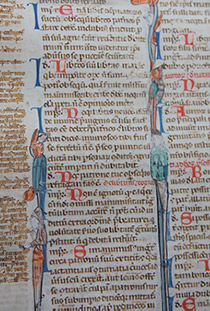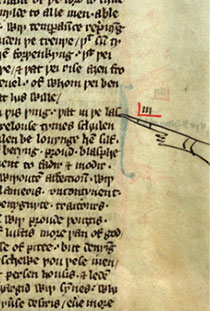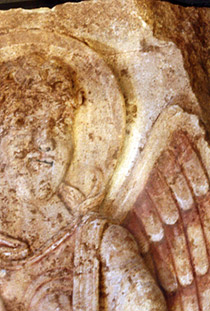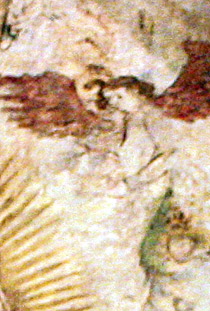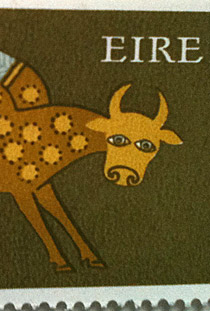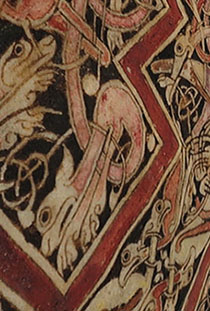Made around 730, the St Chad Gospels is an exquisite blend of cultural influences in the British Isles and beyond. It shows strong correspondences with the Lindisfarne Gospels, which predates it slightly, and the Book of Kells, which it predates by about 70 years. The St Chad Gospels contains the earliest surviving examples of Old Welsh writing.
L ichfield Cathedral Library currently occupies the old Treasury, located directly above the Chapter House. It was built in 1249. The spiral stairs, encircled in stone, make a steep ascent to the library's main room, sheltered beneath a Gothic vaulted ceiling. The library's late 13th-century tile floor still survives. In 1646, during the English Civil War, Lichfield fell to Cromwell's forces. The library, then a separate building, was looted and its medieval manuscripts lost. However, Precentor Higgins concealed the St Chad Gospels and delivered the great gospelbook to the Duchess of Somerset for safekeeping. In 1673, she returned the Chad Gospels along with 1,000 volumes from her late husband's library to help the Cathedral rebuild its own. Since, many benefactors have contributed to the library's rebirth and growth.
The library houses an impressive collection of Bibles and gospelbooks, beginning with the St Chad Gospels and Wycliffe New Testament. It includes a Henry VIII's "Great Bible" (1539), Cranmer's "Great Bible" (1540), "Breeches" or "Geneva" Bible (1560), "He" Bible (1611), "Judas" Bible (1611), and the "Vinegar" Bible of 1717. In addition, the library contains a treasure of maps, like Saxton's maps of England and Wales, and literary works, like an exquisitely illustrated Canterbury Tales (1420), for which Senshu University produced a facsimile in 2009. The Cathedral offers a convenient pdf of its Catalogue of Printed Books (1998), which includes introductory material mentioning a number of its manuscripts and significant incunabula.


